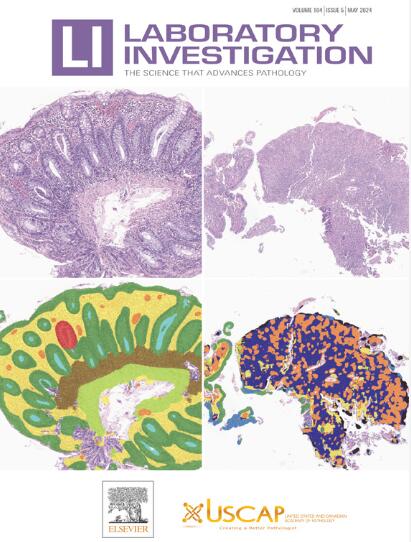Hidden in the Absence: Clinicopathologic Insights on Kidney Diseases Associated With Selective IgA Deficiency
IF 5.1
2区 医学
Q1 MEDICINE, RESEARCH & EXPERIMENTAL
引用次数: 0
Abstract
Selective IgA deficiency (sIgAD) is the most common type of primary immunodeficiency. The diagnosis of sIgAD has occasionally been suggested when a complete absence of background IgA immunofluorescent staining on renal biopsies was observed, but such findings have been described in only 2 patients to date. In this study, the clinical, demographic, and renal biopsy findings of 15 patients with suspected sIgAD, based on a total lack of immunofluorescence for IgA, were collected. In our cohort, most patients presented with acute kidney injury, with or without proteinuria, and had clinical histories consistent with sIgAD, including recurrent infections, autoimmune diseases, allergic disorders, and cancer. However, only 1 patient had a known history of sIgAD. Immunoglobulin testing was available in 10 of 15 patients, 9 of whom showed findings consistent with a diagnosis of sIgAD. Renal biopsies in most patients revealed immune-related glomerular diseases, with lupus nephritis being the most common diagnosis. Recognizing the total absence of IgA staining indicative of sIgAD is important because it can be associated with recurrent infections, autoimmune diseases, allergic disorders, anaphylactic transfusion reactions, and, rarely, malignancies.
隐藏在缺失中:与选择性IgA缺乏相关的肾脏疾病的临床病理学见解。
选择性IgA缺乏症(sIgAD)是最常见的原发性免疫缺陷。当肾脏活检观察到完全没有背景IgA免疫荧光染色时,偶尔会提出sIgAD的诊断,但迄今为止仅在两例患者中描述了这种发现。本研究收集了15例疑似sIgAD患者的临床、人口学和肾活检结果,基于完全缺乏IgA免疫荧光。在我们的队列中,大多数患者表现为急性肾损伤,伴有或不伴有蛋白尿,并且具有与sIgAD一致的临床病史,包括复发性感染、自身免疫性疾病、过敏性疾病和癌症。然而,只有一名患者有sIgAD病史。15例患者中有10例进行了免疫球蛋白检测,其中9例显示的结果与sIgAD的诊断一致。大多数患者的肾脏活检显示免疫相关的肾小球疾病,狼疮肾炎是最常见的诊断。认识到IgA染色完全缺失表明sIgAD很重要,因为它可能与复发性感染、自身免疫性疾病、过敏性疾病、过敏性输血反应以及罕见的恶性肿瘤有关。
本文章由计算机程序翻译,如有差异,请以英文原文为准。
求助全文
约1分钟内获得全文
求助全文
来源期刊

Laboratory Investigation
医学-病理学
CiteScore
8.30
自引率
0.00%
发文量
125
审稿时长
2 months
期刊介绍:
Laboratory Investigation is an international journal owned by the United States and Canadian Academy of Pathology. Laboratory Investigation offers prompt publication of high-quality original research in all biomedical disciplines relating to the understanding of human disease and the application of new methods to the diagnosis of disease. Both human and experimental studies are welcome.
 求助内容:
求助内容: 应助结果提醒方式:
应助结果提醒方式:


